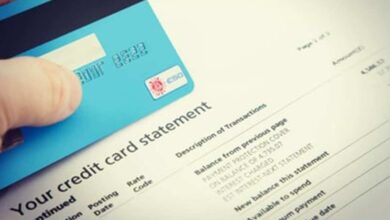
What Is a Trade Matching Engine?
A trade matching engine is a computer program that matches buy and sell orders for securities, Forex, crypto, or other assets. It can be said that It is the heart of every exchange, whether it’s a stock exchange, cryptocurrency exchange, or any other type of market. The trade matching engine is responsible for finding a buyer for every seller and a seller for every buyer. It does this by maintaining an order book, which is a list of all the buy and sell orders that have been placed. When a new order comes in, the trade matching engine will look for another order with which it can match it. If there is no match, the order will go into the order book and wait until someone else places an order that can be matched with it.
How Does a Trade Matching Engine Work?
The trade matching engine uses a number of algorithms to match orders. The First In First Out (FIFO) algorithm is the most common algorithm. This algorithm matches the first buy order with the first sell order. So if there are three buy orders and two sell orders, the trade matching engine will match the first buy order with the first sell order and the second buy order with the second sell order. The third buy order will remain in the order book until another sell order comes in.
Other algorithms that are sometimes used include:
– The Pro-Rata algorithm matches orders based on the quantity of the security being traded. So if there are two buy orders for 100 shares of XYZ stock and one sell order for 100 shares, the trade matching engine will match the first buy order with the sell order, and the second buy order will remain in the order book.
– The Price/Time algorithm matches orders based on price first and then time. So if there are two sell orders for XYZ stock at $10 per share and one buy order at $10 per share, the trade matching engine will match the first sell order with the buy order. The second sell order will remain in the order book.
– The Time/Price algorithm matches orders based on time first and then price. So if there are two sell orders for XYZ stock at $10 per share and one buy order at $9 per share, the trade matching engine will match the first sell order with the buy order. The second sell order will remain in the book and be matched with the next buy order, regardless of price.
Which algorithm is used depends on the exchange or market. Some exchanges allow traders to choose which algorithm they want to use, while others use a single algorithm for all trades.
Why is a Trade Matching Engine Important?
Trade matching engines can match orders much faster and with greater accuracy. A trade matching engine is important because it allows buyers and sellers to trade without needing an intermediary. It also ensures that all trades are executed at the best possible price. If there were no trade matching engines, each trade would have to be manually matched by a human being. This would take a lot of time and be subject to human error.
For example, let’s say you want to buy shares of ABC Corporation. You place an order with your broker to buy 100 shares at $10 per share. The broker then sends this order to the exchange where ABC Corporation is traded. The trade matching engine at the exchange looks for a sell order that matches your buy order. It finds a sell order for 100 shares at $9 per share and matches it with your buy order. You pay $9 per share, and the person who sold you the shares pays $10 per share. The trade matching engine then takes a small fee for executing the trade. If there were no trade matching engine, someone would have to manually find a buyer for your shares, which would take a lot of time and could result in you paying more or less than you wanted to.
The trade matching engine is an important part of every exchange because it allows trades to be executed quickly and efficiently. It is also important to ensure that all transactions are executed at the best possible price.
A trade matching engine is also essential because it provides liquidity. Liquidity is the ability to buy or sell an asset without worrying about finding a buyer or seller. The asset is not liquid if there are no buyers or sellers. A trade matching engine ensures that there is always someone to buy or sell an asset, even if the price isn’t ideal. This makes it easier for traders to buy and sell assets and makes the markets more stable.
How Fast Does a Trade Matching Engine Need to Be?
The speed of a trade matching engine is measured in milliseconds (ms). One millisecond is one-thousandth of a second. So if an exchange can match orders in 100 ms, that means it can match 10,000 orders per second.
Some exchanges can match orders in under 100 ms. The London Stock Exchange’s Turquoise platform can match orders in just 50 ms. The New York Stock Exchange’s NYSE Arca platform can match orders in 300 ms. And Nasdaq’s INET platform can match orders in 100 ms.
The speed of a trade-matching engine is important because it affects how many trades can be made on an exchange. The faster the engine, the more trades can be made. And the more trades that can be made, the more liquid the market is. A liquid market is one where there are always buyers and sellers, and orders can be filled quickly and at a fair price.
What Are Some of The Key Features of a Good Trade Matching Engine?
A trade matching engine’s key features depend on the user’s needs. However, some core features are essential for most trade matching engines.
The first key feature is speed. A trade matching engine needs to be able to match orders quickly and efficiently. The faster the engine, the more trades can be made, and the more liquid the market is.
The second key feature is accuracy. The trade matching engine needs to be able to match orders accurately. If there are errors in the matching process, it can result in trades being made at the wrong price or not being executed at all.
The third key feature is flexibility. The trade matching engine needs to be able to handle a variety of order types. This includes orders for different asset types, sizes, and price levels.
The fourth key feature is reliability. The trade matching engine needs to be up and running at all times. It should also be able to handle a large number of orders without errors.
The fifth key feature is security. The trade matching engine must be secure from hacking and cyber threats. It should also have robust data protection measures in place.
Final Thoughts
The trade matching engine is a vital part of every exchange, and choosing one with the right features for your needs is important. A good trade matching engine should be fast, accurate, flexible, reliable, and secure. When choosing a trade-matching engine, consider all these factors to ensure that you get the best possible product. Such matching engines are superior to the older system of human traders trying to find counterparties for their trades. With the right trade matching engine, you can ensure that your trades are executed quickly and efficiently.







